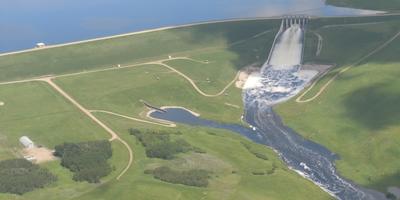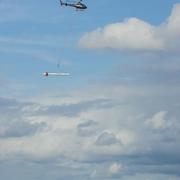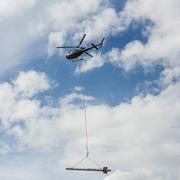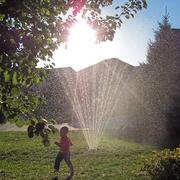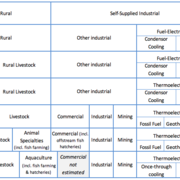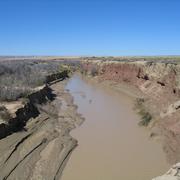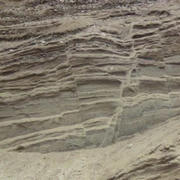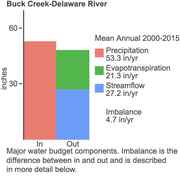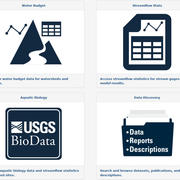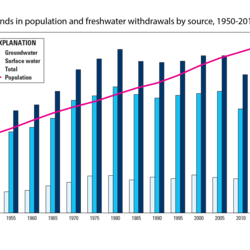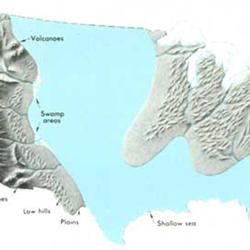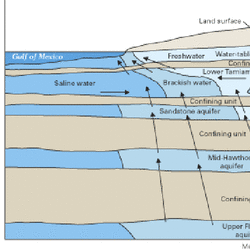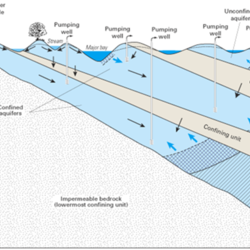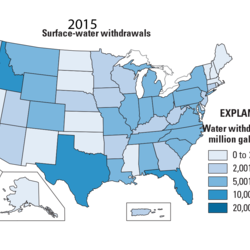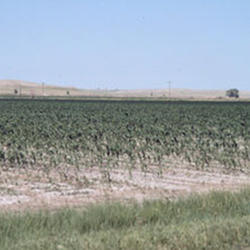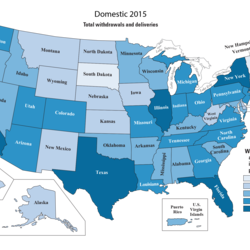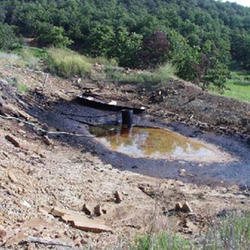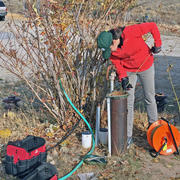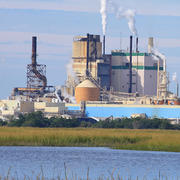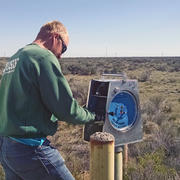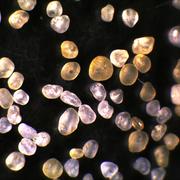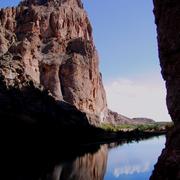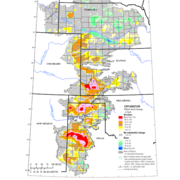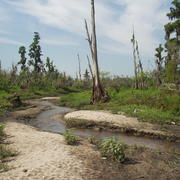Due to a lapse in appropriations, the majority of USGS websites may not be up to date and may not reflect current conditions. Websites displaying real-time data, such as Earthquake and Water and information needed for public health and safety will be updated with limited support. Additionally, USGS will not be able to respond to inquiries until appropriations are enacted. For more information, please see www.doi.gov/shutdown
Water Availability and Use Science Program
Home
Programs L2 Landing Page
Program goals: provide a more accurate assessment of the status of the water resources of the U.S., assist in the determination of the quantity and quality of water that is available for beneficial uses, identify long-term trends in water availability, and develop the basis for an improved ability to forecast the availability of water for economic, energy production, and environmental uses.
WebsiteWater-Use in Florida
Consistent and accurate statewide water-use data are essential for the sound management of Florida's water resources. The five water management districts (WMD), which are the primary collectors of water-use information, tailor their water use programs to each of their own needs and priorities. Consequently, within the State, there are several different levels of data collection,...
Water Use in Wyoming
The U.S. Geological Survey (USGS) has compiled estimates of water use in Wyoming and the rest of the United States at 5-year intervals since 1950.
Water Use in Montana
The U.S. Geological Survey (USGS) has compiled estimates of water use in Montana and the rest of the United States at 5-year intervals since 1950.
Water-Use Terminology
The following terms have been used in one or more of the water-use publications. The comparison of water-use categories over the history of these reports may also help...
Changes in Water-Use Categories
Water-use terminology in the series of USGS water-use circulars, first published for the year 1950, has changed over time as illustrated here. Some categories were re-named but retained essentially the same definition, while other changes split existing categories or shifted components of one category to another. See the entries for these terms in the...
Colorado Plateaus Regional Groundwater Availability
Pilot phase
This study is in a pilot phase during fiscal years 2017 and 2018. The purpose of the pilot phase is to identify possible technical challenges of using the USGS code GSFLOW for simulating groundwater and surface-water flow in the Colorado Plateau principal aquifer system. During the pilot phase, the project will evaluate GSFLOW in the San Juan River Basin (...
Glacial Aquifer System Groundwater Availability Study
The glacial aquifer system is present in parts of 26 states and is subject to a range of climatic conditions from humid to semi-arid. Groundwater availability in the system may be constrained by climatic conditions, poor water quality, hydrogeology, concerns of conflicts with current groundwater users, or the desire to maintain or restore environmental streamflows.
The Glacial Aquifer...
Erosion and Invasive Saltcedar
Formation of arroyos in the late 1800s greatly increased erosion across the southwestern United States. Since the 1930s, however, this erosion has decreased, partly because of bank stabilization by introduced saltcedar. With Isleta Pueblo Indian Nation, the Aquatic Systems Branch developed a new sediment dating method using saltcedar tree rings. We applied the method in a landmark study of...
Glacial Aquifer - Contact Us
Several Research areas are listed and their contacts regarding Glacial Aquifer System Groundwater Availability Study are available here.
<- Back to main Glacial Aquifer System Groundwater Availability Study...
Glacial Aquifer - Objectives and Scope
The overall goal of this study is to assess groundwater availability in the glacial aquifer system. The primary objectives are to quantify current groundwater resources, evaluate how these resources have changed over time, and provide the tools needed to forecast system response to future anthropogenic and environmental stresses.
<- Back to main...
Glacial Aquifer - Current Activities
Preliminary work for the study began in the summer of 2011. The project is planned for 2012-16, and the study will be conducted by a team of researchers from several USGS Science Centers across the study area.
<- Back to main...
Glacial Aquifer - Relevance and Benefits
The glacial aquifer system groundwater availability study is a regional study of the USGS Groundwater Resources Program. These regional studies form the basis for the groundwater assessments within a national Water Census. Groundwater is one of the most important natural resources of the nation. It provides half our drinking water and is essential to the vitality of agriculture and industry,...
Water Budgets Across the United States
In this data visualization, you can see how three major components of the water budget vary across the conterminous US. Precipitation is incoming rain and snow; evapotranspiration is outgoing evaporation from soil and water bodies and transpiration through plants; and runoff is excess water that makes its way to lakes and rivers through streams and spring discharges.
National Water Census - Data Portal
At the National Water Census Data Portal you will find national estimates of water budget components for local watersheds, water withdrawal data for counties, tools to calculate statistics of daily streamflow records, modeled daily streamflow at ungaged stations, and access to records of aquatic biology observations.
Water-use data available from USGS
The U.S. Geological Survey compiles water-use estimates every five years for each State, the District of Columbia, Puerto Rico, and the U.S. Virgin Islands. Archived datasets underlying the published "Estimated Use of Water in the United States" reports are available. Data incorporating any revisions can be found on NWISWeb.
Continuing progress toward a national assessment of water availability and use
Executive SummaryThe Omnibus Public Land Management Act of 2009 (Public Law 111—11) was passed into law on March 30, 2009. Subtitle F, also known as the SECURE Water Act, calls for the establishment of a “national water availability and use assessment program” within the U.S. Geological Survey (USGS). The USGS issued the first report on the...
Evenson, Eric J.; Jones, Sonya A.; Barber, Nancy L.; Barlow, Paul M.; Blodgett, David L.; Bruce, Breton W.; Douglas-Mankin, Kyle; Farmer, William H.; Fischer, Jeffrey M.; Hughes, William B.; Kennen, Jonathan G.; Kiang, Julie E.; Maupin, Molly A.; Reeves, Howard W.; Senay, Gabriel B.; Stanton, Jennifer S.; Wagner, Chad R.; Wilson, Jennifer T.Estimated use of water in the United States in 2015
Water use in the United States in 2015 was estimated to be about 322 billion gallons per day (Bgal/d), which was 9 percent less than in 2010. The 2015 estimates put total withdrawals at the lowest level since before 1970, following the same overall trend of decreasing total withdrawals observed from 2005 to 2010. Freshwater withdrawals were 281...
Dieter, Cheryl A.; Maupin, Molly A.; Caldwell, Rodney R.; Harris, Melissa A.; Ivahnenko, Tamara I.; Lovelace, John K.; Barber, Nancy L.; Linsey, Kristin S.Summary of estimated water use in the United States in 2015
A total of 322 Bgal/d of water withdrawals was reported for eight categories of use in the United States in 2015, which was 9 percent less than in 2010 (354 Bgal/d), and continued a declining trend since 2005. The decline in total withdrawals in 2015 primarily was caused by significant decreases (28.8 Bgal/d) in thermoelectric power, which...
Maupin, Molly A.Hydrogeology and hydrologic conditions of the Ozark Plateaus aquifer system
The hydrogeology and hydrologic characteristics of the Ozark Plateaus aquifer system were characterized as part of ongoing U.S. Geological Survey efforts to assess groundwater availability across the Nation. The need for such a study in the Ozark Plateaus physiographic province (Ozark Plateaus) is highlighted by increasing demand on groundwater...
Hays, Phillip D.; Knierim, Katherine J.; Breaker, Brian K.; Westerman, Drew A.; Clark, Brian R.Altitudes and thicknesses of hydrogeologic units of the Ozark Plateaus aquifer system in Arkansas, Kansas, Missouri, and Oklahoma
A hydrogeologic framework was constructed to represent the altitudes and thicknesses of hydrogeologic units within the Ozark Plateaus aquifer system as part of a regional groundwater-flow model supported by the U.S. Geological Survey Water Availability and Use Science Program. The Ozark Plateaus aquifer system study area is nearly 70,000 square...
Westerman, Drew A.; Gillip, Jonathan A.; Richards, Joseph M.; Hays, Phillip D.; Clark, Brian R.Water use in the Apalachicola-Chattahoochee-Flint River Basin, Alabama, Florida, and Georgia, 2010, and water-use trends, 1985-2010
The Apalachicola-Chattahoochee-Flint (ACF) River Basin encompasses about 20,230 square miles in parts of Alabama, Florida, and Georgia. Increasing population growth and agricultural production from the 1970s to 2010 has prompted increases in water-resources development and substantially increased water demand in the basin. Since the 1980s, Alabama...
Lawrence, Stephen J.Evaluating Landsat 8 evapotranspiration for water use mapping in the Colorado River Basin
Evapotranspiration (ET) mapping at the Landsat spatial resolution (100 m) is essential to fully understand water use and water availability at the field scale. Water use estimates in the Colorado River Basin (CRB), which has diverse ecosystems and complex hydro-climatic regions, will be helpful to water planners and managers. Availability of...
Senay, Gabriel; Friedrichs, MacKenzie O.; Singh, Ramesh K.; Velpuri, Naga ManoharChemical considerations for an updated National assessment of brackish groundwater resources
Brackish groundwater (BGW) is increasingly used for water supplies where fresh water is scarce, but the distribution and availability of such resources have not been characterized at the national scale in the United States since the 1960s. Apart from its distribution and accessibility, BGW usability is a function of the chemical requirements of...
McMahon, Peter B.; Böhlke, John Karl; Dahm, Katharine; Parkhurst, David L.; Anning, David W.; Stanton, Jennifer S.Geophysical log database for the Floridan aquifer system and southeastern Coastal Plain aquifer system in Florida and parts of Georgia, Alabama, and South Carolina
A database of borehole geophysical logs and other types of data files were compiled as part of ongoing studies of water availability and assessment of brackish- and saline-water resources. The database contains 4,883 logs from 1,248 wells in Florida, Georgia, Alabama, South Carolina, and from a limited number of offshore wells of the eastern Gulf...
Williams, Lester J.; Raines, Jessica E.; Lanning, Amanda E.Summary of hydrologic modeling for the Delaware River Basin using the Water Availability Tool for Environmental Resources (WATER)
The Water Availability Tool for Environmental Resources (WATER) is a decision support system for the nontidal part of the Delaware River Basin that provides a consistent and objective method of simulating streamflow under historical, forecasted, and managed conditions. In order to quantify the uncertainty associated with these simulations, however...
Williamson, Tanja N.; Lant, Jeremiah G.; Claggett, Peter; Nystrom, Elizabeth A.; Milly, Paul C.D.; Nelson, Hugh L.; Hoffman, Scott A.; Colarullo, Susan J.; Fischer, Jeffrey M.User manuals for the Delaware River Basin Water Availability Tool for Environmental Resources (DRB–WATER) and associated WATER application utilities
The Water Availability Tool for Environmental Resources (WATER) is a decision support system (DSS) for the nontidal part of the Delaware River Basin (DRB) that provides a consistent and objective method of simulating streamflow under historical, forecasted, and managed conditions. WATER integrates geospatial sampling of landscape characteristics,...
Williamson, Tanja N.; Lant, Jeremiah G.Progress toward a National Water Census
Increasing demand and competition for limited regional water resources make it difficult to ensure adequate water availability for both human and ecological needs now and into the future. Recognizing the need to improve the tools and information that are available to effectively evaluate water-resource availability, the U.S. Geological Survey (...
Jones, Sonya A.Water Use Site Retrieval - Lower Mississippi Gulf Arkansas
In 1977, the Congress of the United States recognized the need for uniform, current, and reliable information on water use and directed the U.S. Geological Survey (USGS) to establish a National Water-Use Information Program (NWUIP) to complement the Survey's data on the availability and quality of the Nations water resources.
Trends in population and freshwater withdrawals by source, 1950–2015
Trends in population and freshwater withdrawals by source, 1950–2015
Map of United States in Late Cretaceous Time (66 to 100 million years
Map of United States in Late Cretaceous Time (66 to 100 million years ago).(Source: USGS Bulletin 1291)
Trends in total water withdrawals by water-use category, 1950–2015
Trends in total water withdrawals by water-use category, 1950–2015
Brackish groundwater movement figure
Brackish groundwater movement figure. (Source: USGS Circular 1262)
Groundwater withdrawals in 2015
Groundwater withdrawals in 2015
Seawater Intrusion Figure
Seawater Intrusion Figure. (Source: USGS Circular 1262)
Surface water withdrawals in 2015
Surface water withdrawals in 2015
Development of geothermal saline groundwater into a warm-spring spa.
Development of geothermal saline groundwater into a warm-spring spa.
(Source: State of Florida Department of Natural Resources. Special Publication No. 21, 1977)
Public Supply Water Use in 2015
Public Supply Water Use in 2015
Salt Impacted Field
Salt impacted field.
(Source: Colorado State University Extension, Fact Sheet No. 0.521)
Domestic Water Use Withdrawals in 2015
Domestic Water Use Withdrawals in 2015
Unlined brine pit on the shore of Skiatook Lake, Okla.
Unlined brine pit on the shore of Skiatook Lake, Okla.
(Source: USGS Toxic Substances Hydrology Program)
Seeking Water from Above: Low-Level Helicopter to Fly Southern Portion of Mississippi Alluvial Plain
Editor: In the public interest and in accordance with Federal Aviation Administration regulations, the USGS is announcing this low-level airborne project. Your assistance informing the local communities is appreciated.
Back and Forth: Ask Questions and Learn More About the Low-Level Helicopter Flying Above the Mississippi Alluvial Plain
Media: Please join the U.S. Geological Survey, CGG Airborne, and various partners for a demonstration takeoff of the low-flying helicopter and description of what scientists are seeking in/around the Mississippi Alluvial Plain. Please RSVP to Heidi Koontz at 720-320-1246 or hkoontz@usgs.gov.
Seeking Water from Above: Low-Level Helicopter to Fly Above Mississippi Alluvial Plain
Editor: In the public interest and in accordance with Federal Aviation Administration regulations, the USGS is announcing this low-level airborne project. Your assistance informing the local communities is appreciated.
Scientists to Measure Wood River Valley Groundwater Levels
Data Will Help to Improve Groundwater-Flow ModelData Will Help to Improve Groundwater-Flow Model
Water Use Across the United States Declines to Levels Not Seen Since 1970
Reductions in water use first observed in 2010 continue, show ongoing effort towards “efficient use of critical water resources.”
Media Advisory: Water Levels to be Measured in 1,300 Southern Idaho Wells
Data Will Provide a “Snapshot” of the Eastern Snake River Plain Aquifer
Reservoir Sediment Can be Used as Fracking Proppant
Instead of requiring costly dredging to remove sediment buildup behind water reservoirs and diversions, sediment from reservoirs in the Missouri River Basin could actually be used as fracking proppant feedstock, also known as frac sand, according to a recently published U.S. Geological Survey study.
Hundreds of Biological Data Available for Fountain Creek Basin, Colorado
The U.S. Geological Survey just added more than 800 fish and macroinvertebrate data samples from Fountain Creek, Colorado, to the USGS BioData Retrieval system.
New USGS Study Tracks Millions of Tons of Rocks, Gravel and Silt Carried by the Sauk River
TACOMA, Wash. — The U.S. Geological Survey recently published the results of a new five-year suspended-sediment and water temperature study from the Sauk River. The purpose of this study is to improve understanding of the magnitude and timing of suspended sediment from the Sauk River and its tributaries to the Skagit River.
New USGS Report Uncovers the Underground Geology Along the Rio Grande
A new U.S. Geological Survey report describes the below ground geology of the Rio Grande transboundary region of New Mexico and Texas, United States, and northern Chihuahua, Mexico.
USGS: High Plains Aquifer Groundwater Levels Continue to Decline
The U.S. Geological Survey has released a new report detailing changes of groundwater levels in the High Plains aquifer. The report presents water-level change data in the aquifer for two separate periods: from 1950 – the time prior to significant groundwater irrigation development – to 2015, and from 2013 to 2015.
USGS Assessment of Brackish Water Could Help Nation Stretch Limited Freshwater Supplies
New USGS assessment provides fresh insights into nation’s brackish groundwater inventory


